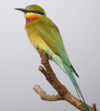INTRODUCTION
The Shetland Islands have been on our “to do” list for over 30 years now, but the long journey, cost of getting there and cost of accommodation had previously lost out to cheap, quick flights to destinations like Portugal with their plentiful accommodation options. The weather was also a major consideration. This year we finally decided to grab the bull by the horns and even the weather was quite accommodating.
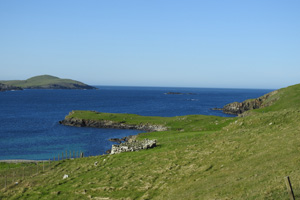 ACCOMODATION
ACCOMODATION
We stayed at Coogrind, a ground floor apartment at Old School Road, Hamnavoe, Burra, Shetland ZE2 9LA. The accommodation was clean & comfortable and adequate for two people; but not so sure about the claim to be 4*! Hamnavoe is situated on the west side of Shetland on the island of Burra which is connected to the mainland by two bridges, 12 miles from the main town, Lerwick where you can find various shops, library, museum and cinema etc. Despite being a little out on the west of mainland Shetland, getting around to the various birding sites and other islands was not a problem.
FOOD
We had two super meals at the Hay’s Dock Cafe Restaurant in Lerwick and excellent fish and chips on several occasions from The Harbour, also in Lerwick and Frankie’s Fish & Chips in Brae.
FLIGHTS, CAR HIRE etc
We decided to drive up to Aberdeen the day before flying with Loganair to Sumburgh. We stayed at the Premier Inn: one of the many convenient hotels at Dyce airport. We just took the best deal available for a quick overnight stay. We arranged car parking whilst on Shetland with Aberdeen International Airport and for a small premium were pleased to use the very convenient & under cover Priority Parking. In truth, all the airport car parking is quite close by if you don’t mind parking in the open and walking a little further. Book online before you go for a much cheaper deal! The following morning we left Aberdeen at 09.20am and arrived at Sumburgh a little before the advertised landing time of 10.20am. The return journey departed Sumburgh 13.20am arriving in Aberdeen at 14.20pm. The flights were quick and trouble-free, despite a very cloudy trip north. Don’t bother paying £10 per person extra for seats with leg room – they are all the same!
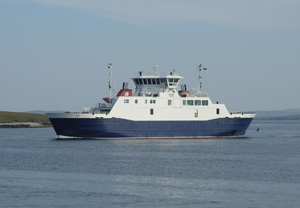 On Shetland we used Bolts Car Hire and drove a roomy & economical Kia cee’d which performed well throughout and was more than adequate for our needs.
On Shetland we used Bolts Car Hire and drove a roomy & economical Kia cee’d which performed well throughout and was more than adequate for our needs.
Ferry services to the main islands are run by Shetlands Islands Council with very reasonable prices and full timetable available on the web site. Booking online is available and recommended during the busier summer months.
On our journey south we stayed at the Macdonald Aviemore Highland Resort (B&B) so that we could try for of few of the Highland specialities on our way home.
RESEARCH AND ESSENTIAL READING

 All you need is Collins Bird Guide and a few Ordnance Survey maps: finding the birding sites is relatively straightforward and quite often we didn’t even need the OS maps – the local tourist map of Mainland Shetland covers all the major roads. There are several useful trip reports online and all the information you could wish for can be found at the following useful links:- Shetland Nature, Scottish Ornitholigists’ Club (SOC), Shetland Bird Club, and Nature in Shetland - Bird News, there is also a facebook site but news can be a little out of date! The Fatbirder web site & Birdguides site, which includes sightings and a map, both contain much useful information.
All you need is Collins Bird Guide and a few Ordnance Survey maps: finding the birding sites is relatively straightforward and quite often we didn’t even need the OS maps – the local tourist map of Mainland Shetland covers all the major roads. There are several useful trip reports online and all the information you could wish for can be found at the following useful links:- Shetland Nature, Scottish Ornitholigists’ Club (SOC), Shetland Bird Club, and Nature in Shetland - Bird News, there is also a facebook site but news can be a little out of date! The Fatbirder web site & Birdguides site, which includes sightings and a map, both contain much useful information.
For details of birding sites see Shetland Islands Council, Shetland Bird Club & Scottish Ornithologists’ Club and for a map of the islands try Google.
DIARY & SIGHTINGS
See the Species list for a record of the more common species seen daily.
Thursday 24th May
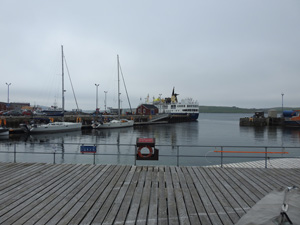 Having sorted the hire car fairly quickly we decided to start birding at once on our journey north to Hamnavoe. One of the first things to strike us was just how common Fulmar are; nesting on rock faces throughout southern and central Mainland. Our first port of call was Loch of Spiggie, where a few Whooper Swan still lingered along with nesting Arctic Tern. About 25 Great Skua were bathing in the freshwater loch, giving us the first taste of this species and their apparent love of this site. With lunch beckoning we moved on to Lerwick Harbour and picked up our first Black Guillemot and Red-throated Diver. Nearing our destination we then stopped at the tidal inlet at East Voe where we saw an Iceland Gull amongst a variety of others, and our first Hooded Crow, together with several waders, albeit in small numbers, and Red-breasted Merganser, a common sight around the islands' many voes and inlets. We briefly stopped at Coogrind to drop off our cases and were pleased to record Wheatear, Skylark and Arctic Tern from our lodgings for the week. Our hostess advised us that the Bearded Seal had returned to Lerwick Harbour after a week’s absence, so we quickly retraced our steps to make sure we didn’t miss this rare visitor to the islands.
Having sorted the hire car fairly quickly we decided to start birding at once on our journey north to Hamnavoe. One of the first things to strike us was just how common Fulmar are; nesting on rock faces throughout southern and central Mainland. Our first port of call was Loch of Spiggie, where a few Whooper Swan still lingered along with nesting Arctic Tern. About 25 Great Skua were bathing in the freshwater loch, giving us the first taste of this species and their apparent love of this site. With lunch beckoning we moved on to Lerwick Harbour and picked up our first Black Guillemot and Red-throated Diver. Nearing our destination we then stopped at the tidal inlet at East Voe where we saw an Iceland Gull amongst a variety of others, and our first Hooded Crow, together with several waders, albeit in small numbers, and Red-breasted Merganser, a common sight around the islands' many voes and inlets. We briefly stopped at Coogrind to drop off our cases and were pleased to record Wheatear, Skylark and Arctic Tern from our lodgings for the week. Our hostess advised us that the Bearded Seal had returned to Lerwick Harbour after a week’s absence, so we quickly retraced our steps to make sure we didn’t miss this rare visitor to the islands.
With plenty of daylight left we set off north and got as far as Brae before turning back for Hamnavoe; Golden Plover proved to be the first highlight of our journey. We did expect to see this species all over the islands, but they were few and far between on our travels. We detoured from the main A970 at Veensgarth, via the B9074 and Tingwall Loch and spotted a lone Red-throated Diver and c8 Tufted Duck, which proved to be quite uncommon on the trip.
Friday 25th May
We decided to head west today: amongst the usual suspects at East Voe was a lone Whimbrel – another species we expected to see everywhere, but which were quite elusive. 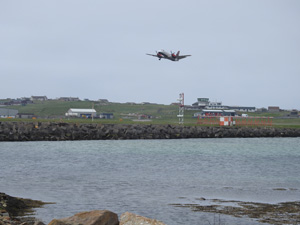 Heading towards Bixter on the A971, via Weisdale and Tresta, we saw our first Collared Dove, without realising how few we would see on Shetland, and were please to record our first Raven, without realising how common they were! We saw Wheatear in most places during our week, but only in small numbers and pairs of Red-Throated Diver were common on most small lochs. 3 Teal at Bixter were the only ones we saw all week and on the way to Reawick we came across our first Razorbill & Guillemot and 4 Dunlin on a rocky outcrop. We rejoined the A971 and made our way to Melby via Sandness, where we saw numerous Sanderling, Dunlin and Turnstone feeding on the foreshore with a stunning Great Northern Diver in full summer plumage, feeding in the bay. As we eventually made our way back to Hamnavoe we spotted 4 Wigeon, an Arctic Skua and a single Common Sandpiper together with the only pair of Goosander for the week. Rock Dove were common.
Heading towards Bixter on the A971, via Weisdale and Tresta, we saw our first Collared Dove, without realising how few we would see on Shetland, and were please to record our first Raven, without realising how common they were! We saw Wheatear in most places during our week, but only in small numbers and pairs of Red-Throated Diver were common on most small lochs. 3 Teal at Bixter were the only ones we saw all week and on the way to Reawick we came across our first Razorbill & Guillemot and 4 Dunlin on a rocky outcrop. We rejoined the A971 and made our way to Melby via Sandness, where we saw numerous Sanderling, Dunlin and Turnstone feeding on the foreshore with a stunning Great Northern Diver in full summer plumage, feeding in the bay. As we eventually made our way back to Hamnavoe we spotted 4 Wigeon, an Arctic Skua and a single Common Sandpiper together with the only pair of Goosander for the week. Rock Dove were common.
Saturday 26th May
With a thick mist prevailing almost everywhere, we decided to head south today in the hope of seeing some sunshine. Our first stop was Clickimin Loch where we saw little other than our first Swallow. By the time we arrived at the Pool of Virkie visibility had improved a little, but there was still a cold wind. Parked up on the opposite shore from the end of the runway at Sumburgh airport we came across Rock Pipit, Wren and a marauding Bonxie being harassed by arctic Terns. A lone Common Seal swam into the mouth of the pool and numerous gulls and several waders kept a family of Eider company.
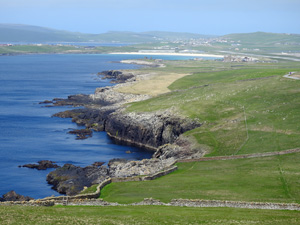 We moved on to Sumburgh Head with its thousands of breeding Guillemot, a stiff breeze keeping the mist at bay and the temperature down despite strong sunshine. We came across 4 Gannet out at sea, a single Razorbill, 3 Puffin, Rock Pipit, 3 Bonxie and 2 Kittiwake and hundreds of breeding Fulmar. We eventually moved on to Loch of Spiggie where well over 100 Bonxie bathed in the loch or lounged on two surrounding fields, either side of the loch. We moved on to Sandwick and the jetty from which the ferry goes to Mousa: nothing new, but good close-ups of an Arctic Skua sunning itself on the rocks. We then retraced our steps a little to Boddam, and from the roadside in the tidal inlet we saw our only Otter of the week, along with 4 Common Seal, a pair of nesting Swallow and a solitary House Martin. Next we moved on to Maywick, with nothing unusual, but 3 Wheatear, numerous Blackbird (more than anywhere else we went on the Mainland) and the obligatory 3 Bonxie.
We moved on to Sumburgh Head with its thousands of breeding Guillemot, a stiff breeze keeping the mist at bay and the temperature down despite strong sunshine. We came across 4 Gannet out at sea, a single Razorbill, 3 Puffin, Rock Pipit, 3 Bonxie and 2 Kittiwake and hundreds of breeding Fulmar. We eventually moved on to Loch of Spiggie where well over 100 Bonxie bathed in the loch or lounged on two surrounding fields, either side of the loch. We moved on to Sandwick and the jetty from which the ferry goes to Mousa: nothing new, but good close-ups of an Arctic Skua sunning itself on the rocks. We then retraced our steps a little to Boddam, and from the roadside in the tidal inlet we saw our only Otter of the week, along with 4 Common Seal, a pair of nesting Swallow and a solitary House Martin. Next we moved on to Maywick, with nothing unusual, but 3 Wheatear, numerous Blackbird (more than anywhere else we went on the Mainland) and the obligatory 3 Bonxie.
Sunday 27th May
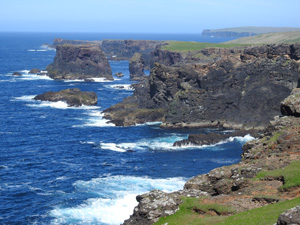 With wall-to-wall sunshine and temperatures rising rapidly we decided to head north today: we were now getting a little blasé about pairs of Red-throated Diver and Mergansers and on our way to North Roe right at the end of the A970 we saw only the second Common Sandpiper of our trip along with the usual small numbers of waders, Bonxie and a single Mute swan. On the way south again we stopped just off the A590 after Housetter and enjoyed watching Wren and Pied Wagtail with yet another pair of R-t D on the water.
With wall-to-wall sunshine and temperatures rising rapidly we decided to head north today: we were now getting a little blasé about pairs of Red-throated Diver and Mergansers and on our way to North Roe right at the end of the A970 we saw only the second Common Sandpiper of our trip along with the usual small numbers of waders, Bonxie and a single Mute swan. On the way south again we stopped just off the A590 after Housetter and enjoyed watching Wren and Pied Wagtail with yet another pair of R-t D on the water.
Heading over to Eshaness on the west coast we spotted a lovely pair of Golden Plover by the roadside. Walking down the hillside from the lighthouse at Eshaness we saw 3 Red-throated Diver along with nesting pairs of Oystercatcher, Ringed Plover and 4 Turnstone. Returning to Brae and Voe we took a detour west via Aith where we saw a pair of Whooper Swan and 3 more Wigeon plus a lone Wood Pigeon near Veensgarth as we neared Hamnavoe once again.
Monday 28th May
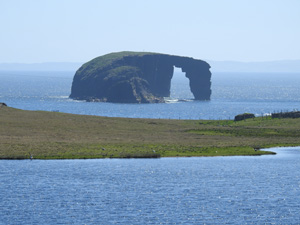 We had decided a couple of days earlier to book ferries to get us to Fetlar and with the weather now getting seriously warm we set off early heading north for Toft to catch our first ferry to Ulsta on Yell. The Sea was calm and the journey uneventful, with the occasional gull or auk for company. The drive across Yell is like a mad dash for everyone who wishes to catch the next ferry to Unst – just don’t get in anyone’s way! Anticipating this, we had opted for the subsequent ferry from Gutcher, half an hour later, which briefly called in at Belmont, Unst before completing the onward journey to Fetlar. Amongst the more common species seen on the drive we picked up Golden Plover, Wheatear and Ringed Plover. Around the harbour at Unst and on the trip across to Fetlar we saw several Black Guillemot, Gannet, Puffin and Common Guillemot.
We had decided a couple of days earlier to book ferries to get us to Fetlar and with the weather now getting seriously warm we set off early heading north for Toft to catch our first ferry to Ulsta on Yell. The Sea was calm and the journey uneventful, with the occasional gull or auk for company. The drive across Yell is like a mad dash for everyone who wishes to catch the next ferry to Unst – just don’t get in anyone’s way! Anticipating this, we had opted for the subsequent ferry from Gutcher, half an hour later, which briefly called in at Belmont, Unst before completing the onward journey to Fetlar. Amongst the more common species seen on the drive we picked up Golden Plover, Wheatear and Ringed Plover. Around the harbour at Unst and on the trip across to Fetlar we saw several Black Guillemot, Gannet, Puffin and Common Guillemot.
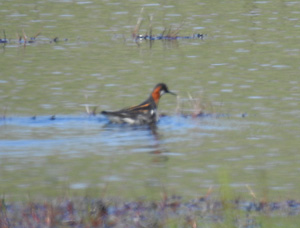 On Fetlar, as usual, there were plenty Arctic Tern whilst Redshank, Snipe, Lapwing and Dunlin were common in small numbers. There was also the usual array of Skylark, Meadow Pipit and Wheatear along with a couple of hunting Arctic Skua. We arrived at the RSPB reserve at Funzie to find no sign of Red-necked Phalarope and the warden and a colleague painting and refurbishing the small hide overlooking the area where the birds can usually be found. Undaunted, we traced our steps back along the B9088, turning off south for Tresta Beach and a small wetland area just south of Houbie. Around 20 Bonxie lazed about on grassland behind the beach whilst the usual pair of Red-throated Diver swam on the small loch behind the shingle, where a Ringed Plover scurried about, obviously nesting.
On Fetlar, as usual, there were plenty Arctic Tern whilst Redshank, Snipe, Lapwing and Dunlin were common in small numbers. There was also the usual array of Skylark, Meadow Pipit and Wheatear along with a couple of hunting Arctic Skua. We arrived at the RSPB reserve at Funzie to find no sign of Red-necked Phalarope and the warden and a colleague painting and refurbishing the small hide overlooking the area where the birds can usually be found. Undaunted, we traced our steps back along the B9088, turning off south for Tresta Beach and a small wetland area just south of Houbie. Around 20 Bonxie lazed about on grassland behind the beach whilst the usual pair of Red-throated Diver swam on the small loch behind the shingle, where a Ringed Plover scurried about, obviously nesting.
After walking out to the loch we returned to the wetland near Houbie: passing it previously we had stopped and scanned the area without luck. A small group of birders were just enjoying their lunch and pointed out where 2 of our target birds were. Almost immediately, before we could even get out of the car, the birds took flight and eventually landed nearby, only to vanish into thick vegetation. Thankfully, we had booked a late afternoon ferry rather than just after lunch-time and we settled down to our own lunch and a lengthy wait in the hot sunshine. After almost 2 hours a Red-necked Phalarope suddenly lifted from the grassland and settled briefly on the small pool, to be joined, presumably, by its mate. Another Phalarope then appeared and after a confused chase involving all three birds, two disappeared back into the vegetation, leaving a lone bird to feed on the pool. A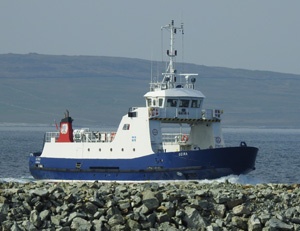 lthough a little distant for a good photo, we watched the bird feeding for about 15 minutes before returning to the car to head back to the ferry. The same spot also held c8 Golden Plover and a Pied Wagtail, as well as Wheatear and Redshank.
lthough a little distant for a good photo, we watched the bird feeding for about 15 minutes before returning to the car to head back to the ferry. The same spot also held c8 Golden Plover and a Pied Wagtail, as well as Wheatear and Redshank.
The ferry returned direct to Gutcher, where a lone Whooper Swan patrolled the harbour-side pool. Having about an hour before our ferry from Yell back to the mainland, we drove north to Cullivoe to look for a Glaucous Gull which had been regularly seen there, around the harbour. We had also spent 15 minutes there before our morning ferry, but on both occasions we missed out. There were hundreds of gulls, including a large number of immatures but, try as we might, we couldn’t spot our target. Back on the mainland we detoured to Brae for a fish and chip supper at Frankie’s.
Tuesday 29th May
With several online reports of migrants in the area we set off south this morning for Scatness but the birds had moved on. Looking for somewhere different we decided to visit a small beach near Levenwick – big mistake! The tiny car park had room, just about, for three vehicles and we parked next to the only car there. We were followed down the single track road by an elderly lady with a frantically yapping dog in the front passenger seat of her car. We hadn’t even got out of the car when she attempted to reverse into the space next to us and promptly hit our car. She drove forward to get a better angle and was about to hit our car again when I got out and pointed out the error of her ways. She denied having hit us, despite red paint from her car on ours and a scrape on her rear bumper, which she said was the result of a previous mishap. Having taken her details we left her trying to calm her yapping pooch, seemingly more upset about her dog than what she had just done. How easy it is to put a damper on your day! Being near the airport and the car hire depot we decided to report the incident to them rather than get involved with any paperwork as we were about to leave.
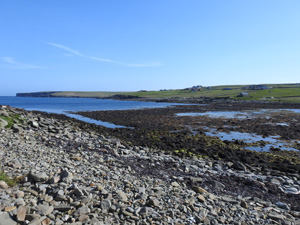 We then moved on to Boddam hoping to see Otter again, but no joy; we had to make do with a family of 4 Twite instead. We continued north, through the settlement, along the minor road which subsequently rejoins the A970. This proved to be an interesting diversion with cultivated farmland land, several remote homesteads and a few small lochs. As well as the ever present Arctic Tern and Fulmar, we came across Snipe, Whimbrel, Dunlin, Turnstone, Arctic Skua and 2 Shellduck plus a juvenile; Lapwing, Skylark and Meadow Pipit were ever present. We moved on to the Mousa ferry at Sandwick and came across Grey Seal and Razorbill. Criss-crossing the island we then went to St. Ninians Isle via Bigton and spotted Red-throated Diver yet again, Shag, Eider and Black Guillemot.
We then moved on to Boddam hoping to see Otter again, but no joy; we had to make do with a family of 4 Twite instead. We continued north, through the settlement, along the minor road which subsequently rejoins the A970. This proved to be an interesting diversion with cultivated farmland land, several remote homesteads and a few small lochs. As well as the ever present Arctic Tern and Fulmar, we came across Snipe, Whimbrel, Dunlin, Turnstone, Arctic Skua and 2 Shellduck plus a juvenile; Lapwing, Skylark and Meadow Pipit were ever present. We moved on to the Mousa ferry at Sandwick and came across Grey Seal and Razorbill. Criss-crossing the island we then went to St. Ninians Isle via Bigton and spotted Red-throated Diver yet again, Shag, Eider and Black Guillemot.
Trying to track down more migrants we visited the overgrown burn at Geosetter: 2 Whimbrel, Curlew, Chiffchaff, Raven and Swallow were our reward. Returning north, we ventured along the A971 as far as Weisdale, seeing more of the same plus Red-breasted Merganser. Returning to Hamnavoe via the B9074, just past Tingwall Loch, along with the regular roosting gull flock we saw a single adult Iceland Gull, probably the same one we had seen at nearby East Voe.
Wednesday 30th May
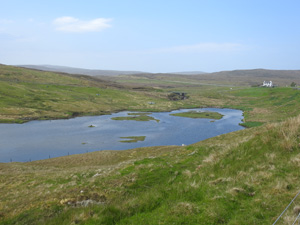 We decided to visit the small plantations around Kergord today seeing all the usual stuff on the way, the Rook colony was different! Collared Dove, Hooded Crow and Greylag provided the supporting cast, with music only from Chiffchaff and Blackcap. Heading north to Voe we took the A968 Isles Road towards Toft, for several miles to the Memory Garden which overlooks the first sea inlet on the right. This little oasis of trees, shrubs, ponds and plants has been developed over the last 20-30 years and provides one of the few sheltered areas for birds on this part of the mainland. We saw Wren, Siskin, Lesser Redpoll and Blackcap here before returning to Lerwick for lunch, via the A9071, Laxo, Dury and Catfirth with Guillemot, Razorbill, Eider, Wigeon and c8 Turnstone around the coast.
We decided to visit the small plantations around Kergord today seeing all the usual stuff on the way, the Rook colony was different! Collared Dove, Hooded Crow and Greylag provided the supporting cast, with music only from Chiffchaff and Blackcap. Heading north to Voe we took the A968 Isles Road towards Toft, for several miles to the Memory Garden which overlooks the first sea inlet on the right. This little oasis of trees, shrubs, ponds and plants has been developed over the last 20-30 years and provides one of the few sheltered areas for birds on this part of the mainland. We saw Wren, Siskin, Lesser Redpoll and Blackcap here before returning to Lerwick for lunch, via the A9071, Laxo, Dury and Catfirth with Guillemot, Razorbill, Eider, Wigeon and c8 Turnstone around the coast.
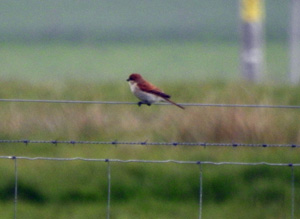 Looking for migrants we returned to Upper Kergord and once again failed to see our targets, but at Sand Water at the junction of the B9075 and the A970 around 4pm we spotted a Bonxie resting on the shoreline. Trying to get a decent photo before it took off I ignored a small wader just to its left, despite Amanda’s urging to take a look. I eventually got the scope on it and, imagine my surprise; a beautiful Red-necked Phalarope filled the viewfinder. We were able to enjoy it for a few minutes before the bird was joined by a pair of Redshank and then they all flew off south, across the water.
Looking for migrants we returned to Upper Kergord and once again failed to see our targets, but at Sand Water at the junction of the B9075 and the A970 around 4pm we spotted a Bonxie resting on the shoreline. Trying to get a decent photo before it took off I ignored a small wader just to its left, despite Amanda’s urging to take a look. I eventually got the scope on it and, imagine my surprise; a beautiful Red-necked Phalarope filled the viewfinder. We were able to enjoy it for a few minutes before the bird was joined by a pair of Redshank and then they all flew off south, across the water.
Decision time: head back to Hamnavoe, or with plenty of daylight left, head to Spiggie Loch where a Red-backed Shrike had been reported. No contest really – the Shrike was where it should have been, just beyond the Loch at the junction of the road to Hillwell. C50 Bonxie were on the Loch as usual and 2 Snipe, Whooper Swan and Tufted Duck were also in the area. Over the last two days we had managed to dip out on Red-breasted Flycatcher (twice), Spotted Flycatcher, Marsh Warbler and Paddyfield Warbler. Just can’t win them all, but we did see some good birds and certainly saw a lot of Shetland!
Thursday 31st May
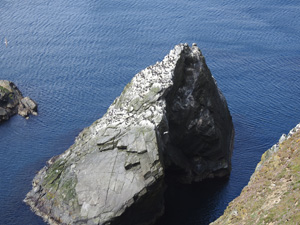 Time to fly back to Aberdeen today. From Hamnavoe we set off south for Sumburgh and the airport, but decided on a small detour via Geosetter where we saw Chiffchaff once again and were rewarded with a female Pied Flycatcher, sitting on the fence on the south side above the burn and making occasional forays to catch insects. As Grutness was also on our way (almost) we paid a flying visit and spotted Pied Wagtail and Wheatear before eventually finding our target, a flirty Marsh Warbler feeding in a walled garden in the only trees around. Some of the dips of the last few days were forgotten ...... almost.
Time to fly back to Aberdeen today. From Hamnavoe we set off south for Sumburgh and the airport, but decided on a small detour via Geosetter where we saw Chiffchaff once again and were rewarded with a female Pied Flycatcher, sitting on the fence on the south side above the burn and making occasional forays to catch insects. As Grutness was also on our way (almost) we paid a flying visit and spotted Pied Wagtail and Wheatear before eventually finding our target, a flirty Marsh Warbler feeding in a walled garden in the only trees around. Some of the dips of the last few days were forgotten ...... almost.
Back in Aberdeen early afternoon, we drove to Aviemore where we were meeting family and staying for a couple of nights in the hope of picking up a few Highland specialities. Nice to see swift and Jackdaw again!
Friday 1st June
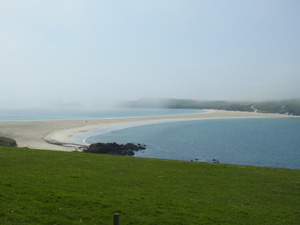 Brief trip to Loch Vaa just outside Aviemore (also the previous evening) in the hope of seeing Slavonian Grebe which used to breed there when we were last in the area. No luck this time, too many fishermen and encroaching civilisation: we could only manage a pair of Common Sandpiper and a Goldeneye. With Buzzard overhead (sadly, not Osprey) we set off north on the A9 and then west on the A835, turning left at Gorston, past Loch Luichart to Kinlochewe and Loch Maree, on our way to Gairloch. Again, when we were in the Highlands years ago this route had been quite productive, but not this time: views of the Lochs were impeded by trees and bushes which were much taller and, surprisingly, bushier than we remembered. Around Gairloch we had previously seen both Red & Black-throated Diver quite close to the shore. There were plenty divers and Red-breasted Merganser on the water, but the tide was out and in the heat haze the distant birds could have been either species. We eventually spotted one Black-throated Diver that was just about identifiable, on an inland loch as we returned east and then south. Before reaching Inverness we saw Goosander and a single Red Kite. After dinner we went for a drive around the back roads to Loch Garten: not many birds but we spotted a single Roe deer and a pair of Hares. Willow Warbler, Blue Tit and Mistle thrush were new for our trip – you can tell we were getting desperate by now.
Brief trip to Loch Vaa just outside Aviemore (also the previous evening) in the hope of seeing Slavonian Grebe which used to breed there when we were last in the area. No luck this time, too many fishermen and encroaching civilisation: we could only manage a pair of Common Sandpiper and a Goldeneye. With Buzzard overhead (sadly, not Osprey) we set off north on the A9 and then west on the A835, turning left at Gorston, past Loch Luichart to Kinlochewe and Loch Maree, on our way to Gairloch. Again, when we were in the Highlands years ago this route had been quite productive, but not this time: views of the Lochs were impeded by trees and bushes which were much taller and, surprisingly, bushier than we remembered. Around Gairloch we had previously seen both Red & Black-throated Diver quite close to the shore. There were plenty divers and Red-breasted Merganser on the water, but the tide was out and in the heat haze the distant birds could have been either species. We eventually spotted one Black-throated Diver that was just about identifiable, on an inland loch as we returned east and then south. Before reaching Inverness we saw Goosander and a single Red Kite. After dinner we went for a drive around the back roads to Loch Garten: not many birds but we spotted a single Roe deer and a pair of Hares. Willow Warbler, Blue Tit and Mistle thrush were new for our trip – you can tell we were getting desperate by now.
Saturday 2nd June
Time to head home. But first, quick visits to Loch Garten, Loch an Eileen and surrounding areas. Highlights were Coal Tit and a calling Cuckoo or two. Before leaving Loch an Eileen we eventually managed a pair of Spotted Flycatcher and 2 Red Squirrels. Where were all the Highland specialities we had come to see? I know we only had a whistle-stop tour and didn’t visit Loch Ruthven but on previous trips the route we had taken had yielded Osprey, Crested Tit, Redstart, Ring Ouzel, Black Grouse, Golden Eagle, White-tailed Eagle, Wood Warbler, Slavonian Grebe and super close-ups of Black-throated Diver. Obviously time to plan another visit to the Highlands for a longer stay!
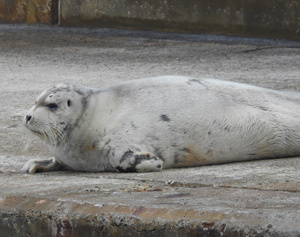 SUMMARY
SUMMARY
We saw 70 species on Shetland and 82 in total on the trip. We are not sure we would return to Shetland: too many other places to go where there is much more potential for new species. The rarities seen annually on migration throughout the islands are mouth-watering, but, as we experienced, not easy to find and with time consuming and occasionally lengthy journeys involved. We did enjoy our stay, but a week was just a little too long for us. The Bearded Seal in Lerwick was a super bonus, as was finding our own Red-necked Phalarope on the mainland.
Species Trip List
Bird and mammal photos
Birding Sites and likely species
Trip Report PDF
David & Amanda Mason
